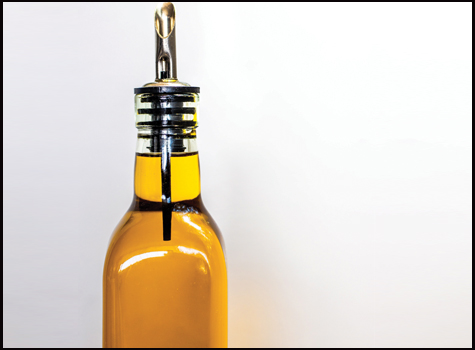
One aspect of all of us being stuck indoors for the past several months is that people have started cooking and baking more at home. So let’s learn about different fats used for cooking and how they affect our health.
Nutritional Functions of Fat
Fats are organic compounds made up of carbon, hydrogen, and oxygen. The primary function of fat is storage for energy. Fat has nine calories per gram. All fats have the same number of calories regardless of the type of fat. Fat is also important for absorption of fat soluble Vitamins A, D, E, and K, and for other important cellular and hormonal functions.
Types of Fats
Fats belong to a group of substances called lipids, and they come in liquid or solid form. All fats are a mix of saturated, monounsaturated, and polyunsaturated fatty acids.
THE GOOD: Unsaturated Fats
Unsaturated fats are considered healthy fats because they play many beneficial roles. They can improve blood cholesterol levels and help lower inflammation. Unsaturated fats are found in plant foods such as nuts, seeds, avocados and olives. The oils are liquid at room temperature. There are two types of unsaturated fats – monounsaturated and polyunsaturated fats:
• Monounsaturated fats are found in high concentrations in olive, peanut, bran, and canola oils, avocados, nuts such as almonds, hazelnuts, pecans, and seeds such as pumpkin and sesame.
• Polyunsaturated fats are found in high concentrations in sunflower, safflower, corn, soybean, and flaxseed oils, walnuts, and flax seeds.
THE BAD: Saturated Fats
Saturated fat is mainly found in animal foods such as meat, eggs, and dairy. Saturated fat is solid at room temperature such as ghee, butter, lard, and animal fats. Saturated fats raise the LDL cholesterol and increase risk of heart disease. A few plant foods are also high in saturated fats such as ghee, coconut, coconut oil, palm oil, and palm kernel oil.
THE UGLY: Trans Fats
Trans fats are called the ugly fats and are worse than saturated fats because they raise bad LDL and lower good HDL cholesterol. They increase inflammation which has been linked to many chronic conditions. To identify trans-fats, look for the words like hydrogenated oil, shortening, Vanaspati, or margarine on the ingredient list.
Which oils should be used for cooking?
There is a misconception that foods fried in olive oil are healthier than foods fried in other oils. For long term health, it is better to avoid all fried foods or at least limit them to a few special occasions per year. Studies have shown that oil heated at a higher temperature causes chemical changes that increase inflammation. Reheating oil can further damage the components and produce more toxic compounds that are very damaging to the heart.
It is advisable to limit the amount of oil in cooking. Olive oil has a very low smoke point and should not be heated at a high temperature. So it is good for cold dressings and marinades. For sautéing, use oils from nuts and seeds such as sesame oil, peanut oil, mustard oil, or grapeseed oil.
Use unrefined instead of refined oils. Cold pressed oils are extracted in a heat-controlled environment so they retain nearly all of their natural nutrients. Refined oils are made with high heat and chemical solvents which destroys the flavor and nutrients in oils.
Blending two different oils can also help the balance of fatty acids. So instead of using just one single type of oil, it is better to keep a variety of oils. You may eat olive oil in a salad, sauté your vegetables in peanut oil, and make a stir fry in sesame oil. Buy smaller sized bottles of 2-3 varieties.
It is important to limit the total amount of oil, no matter which oil you use. When food is served, you should not see any visible oil on your plate. This is also one reason to limit eating out as all restaurant foods have a lot of oil.
Is Ghee bad?
Ghee, or Ghrita, as it is known in Sanskrit, has a special place in the diet according to Ayurveda. Ghee contains Butyric acid and Conjugated Linolenic Acid which are considered anti-inflammatory, and are important to replenish our gut lining. Ghee is said to balance the doshas, increase digestive fire Agni, and enhance memory. Per Ayurvedic recommendations, it is okay to have a small amount of ghee in your diet. Ghee is saturated fat, so use in small amounts.
What about coconut oil?
Many of the health claims for coconut oil refer to research that used a special formulation of coconut oil made of 100 percent medium-chain triglycerides (MCTs). MCTs have a shorter chemical structure than other fats and are digested differently. Commercial coconut oil contains mostly Lauric acid, which is not an MCT. Coconut oil is mostly saturated fat so best to limit it. If you like the taste, use virgin unrefined coconut oil sparingly in baking or cooking.
———-
Parul Kharod, MS, RD, LDN is a registered dietitian and licensed nutritionist and works as a Clinical Dietitian with Outpatient Nutrition Services at WakeMed Hospital in Cary and Raleigh. She can be reached at [email protected]
Posted: Monday, January 11, 2021



